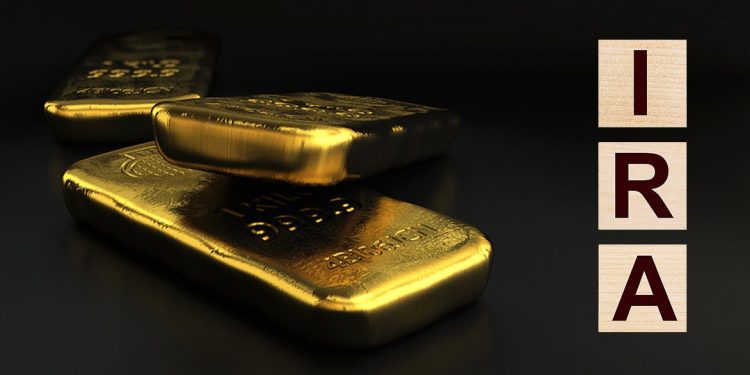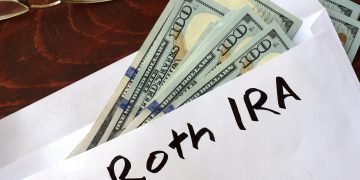What is approved gold for IRAs?
A precious metals IRA can contain bullion or coins. Notwithstanding the everyday term “gold IRA,” you can hold silver, platinum, and palladium in this record.
If you’re wondering what “IRS-approved gold” is, you should know that there are minimum requirements for the metal’s fineness as well as weight, type, and size requirements. The gold approved by the IRS must be 99.5% pure. Pure silver must be 99.9%. Both palladium and platinum must be 99.95 percent pure.
One of the best gold IRA custodians, STRATA Trust Company, says that your precious metals must be certified or accredited by a national government mint or one of the following authorities: ISO 9000, NYMEX, COMEX, NYSE/Liffe, LME, LBMA, LPPM, or TOCOM
American Eagle proof coins and bullion, as well as Canadian Maple Leaf coins, are two of the most widely used kinds of gold that have been approved by the IRA.
How to hold physical gold in an IRA: You can invest in mining company stocks, mutual funds that hold these stocks, or a gold ETF if you want to get exposure to precious metals in your retirement account. A gold or silver IRA can provide peace of mind to individuals who believe that having physical possession of gold or other precious metals is more secure.
The main selling point is owning physical precious metals but storing, insuring, and shipping them to you once you reach the age where you must take required minimum distributions (RMDs) are expensive.
Age and retirement restrictions Self-directed IRAs, including gold IRAs, have the same age-based contributions and withdrawal restrictions as traditional IRAs. You can contribute up to $6,000 in 2022 assuming you are under 50 years of age, or up to $7,000 on the off chance that you are 50 or more established.
Taxes: If you take gold out of your IRA before you’re 52 years old, you’ll have to pay income tax on the gold’s value and pay a 10% penalty for taking an early withdrawal from a retirement account.
1. Recognize a gold IRA overseer
To try not to cross paths with charge guidelines on self-managing, independent IRAs — including gold IRAs — need to have an IRS-endorsed overseer. According to the Retirement Industry Trust Association, the custodian is a financial institution that is responsible for carrying out the administrative and investment activities that are required to maintain your IRA’s good standing with the IRS and maintain its tax-deferred status.
You can search for a custodian on the RITA website or one of the preferred custodians recommended or required by many gold IRA companies.
2. Open a gold IRA account with a company that makes account opening easier. They sell gold coins, bullion, and such, however they don’t offer IRA speculation guidance (regardless of what their sites or other advertising materials could propose). When selecting one, research is essential. In Money’s Guide to the best gold IRA Companies, learn more about what to look for when choosing a company.
3. You can add money to your gold IRA in a number of different ways. You can use any one or all of the following options.
Rollover A lot of people use part or all of the money in an existing retirement account to fund their new account. According to IRS regulations, a gold IRA can be topped up with funds from a 401(k), 403(b), 457(b), or Thrift Savings Plan. Contact the administrator of your current retirement plan and tell them how much you want to roll over to begin the process.
Caveat: You have a maximum of 60 days to transfer the withdrawn funds into your new gold IRA if you are younger than 5912 years old and using a rollover to fund it. You will be required to pay income tax on the funds withdrawn, and even being a day late will result in a 10% early withdrawal penalty.
Transfer Many people choose to let their gold IRA company handle the rollover directly from one institution to another in order to avoid missing the deadline. Since the cash never in fact goes through your hands, you don’t need to stress over duties or punishments being surveyed.
Consider how much you want to transfer into your new IRA as a crucial caveat for both rollovers and transfers. You can create a diversified retirement portfolio with the majority of conventional IRAs. Because precious metals are a single asset class, an IRA that only holds precious metals is not diversified by definition. In addition, despite the fact that the gold gains value within the account without incurring any tax, you will not have the opportunity to grow your money through dividends. To achieve adequate diversification, it is generally accepted that you should invest between 5 and 10 percent of your overall portfolio in precious metals.
Cash You should avoid using cash to fund a gold IRA because you will have already paid taxes on that money. The purpose of using an IRA as an investment vehicle is to take advantage of the tax break that comes from using money before taxes are paid.
4. Work out gold IRA expenses
Sadly, most gold IRA organizations don’t have an extraordinary record for expense straightforwardness on their sites, so figuring out the subtleties could involve a call or two. Normal charges incorporate record arrangement and support, stockpiling, and protection. When you buy your precious metals, you’ll also have to pay a markup, which varies by company and product.
Companies that say they don’t charge for account maintenance, storage, or insurance should be avoided. Despite the fact that this may technically be true, you will still pay them. Storage and insurance fees are typically owed to the depository rather than the gold IRA company, and annual fees typically originate from the account custodian.
5. If you want to buy gold in an IRA, there are a lot of rules and restrictions to follow. If you want a gold IRA, you’ll have to jump through a lot of hoops. You can avoid making a potentially costly mistake with your retirement savings if you are familiar with the fundamentals of what the IRS allows and does not allow.
















